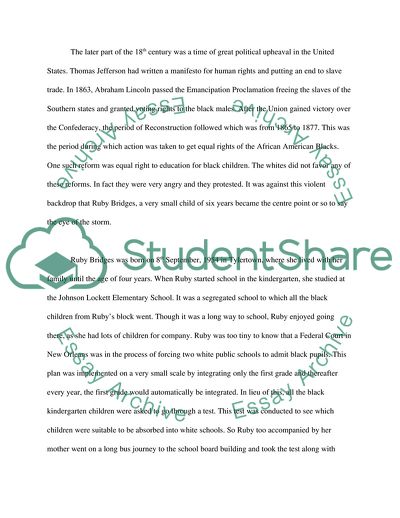Cite this document
(Ruby Bridges and the Civil Rights Movement Term Paper, n.d.)
Ruby Bridges and the Civil Rights Movement Term Paper. Retrieved from https://studentshare.org/social-science/1713053-ruby-bridges-and-the-civil-rights-movement
Ruby Bridges and the Civil Rights Movement Term Paper. Retrieved from https://studentshare.org/social-science/1713053-ruby-bridges-and-the-civil-rights-movement
(Ruby Bridges and the Civil Rights Movement Term Paper)
Ruby Bridges and the Civil Rights Movement Term Paper. https://studentshare.org/social-science/1713053-ruby-bridges-and-the-civil-rights-movement.
Ruby Bridges and the Civil Rights Movement Term Paper. https://studentshare.org/social-science/1713053-ruby-bridges-and-the-civil-rights-movement.
“Ruby Bridges and the Civil Rights Movement Term Paper”. https://studentshare.org/social-science/1713053-ruby-bridges-and-the-civil-rights-movement.


